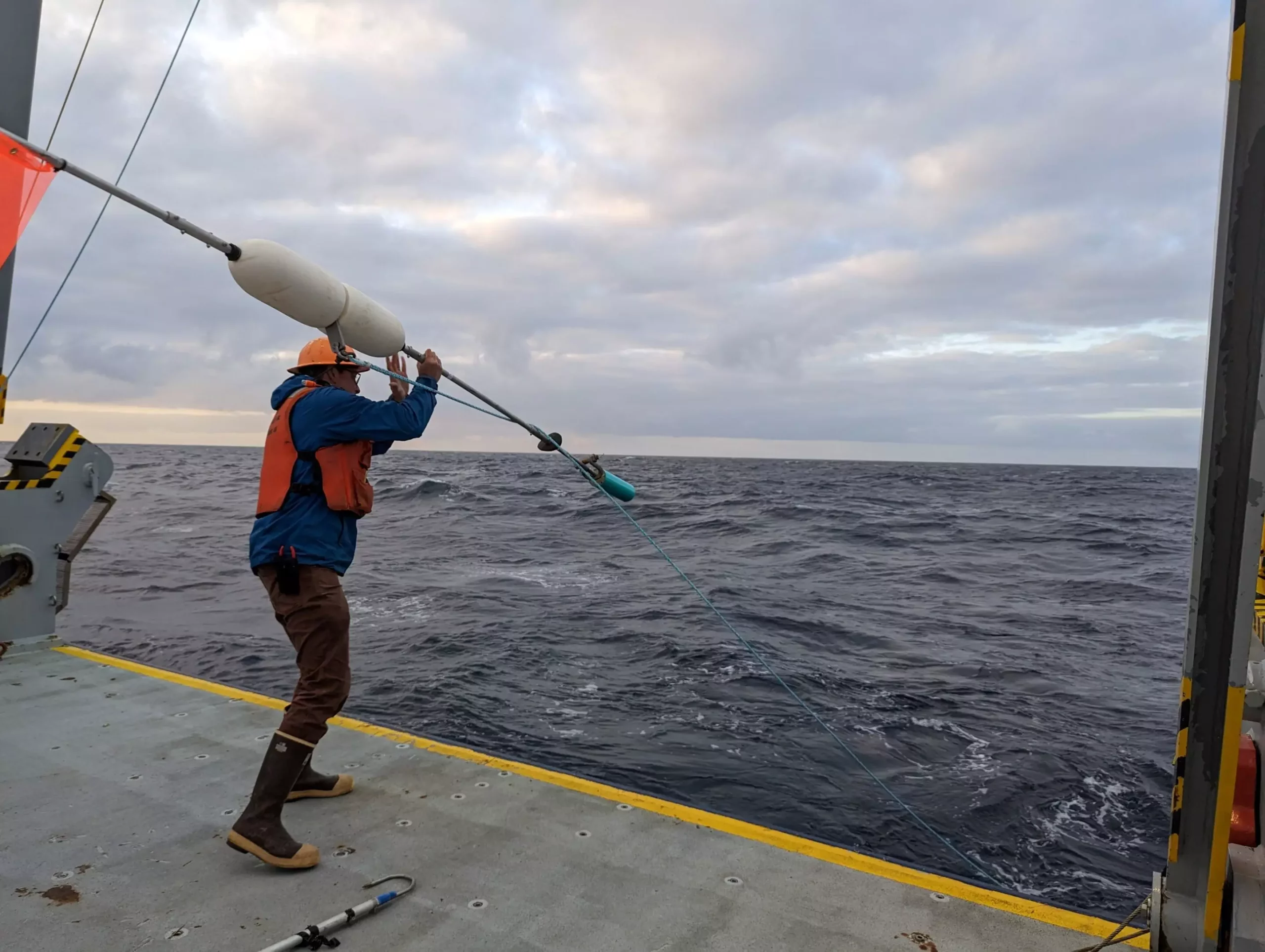The intricate processes governing the movement of carbon dioxide (CO2) from the ocean surface to its depths are central to our understanding of climate dynamics. Given the ocean’s role as a significant carbon sink, how carbon is sequestered can have profound implications on our efforts to combat climate change. A recent study published in *Science* has shed light on an often-overlooked factor: the dietary preferences of bacteria that consume lipids, a type of organic molecule that plays a critical role in the biological carbon pump.
As highlighted by Benjamin Van Mooy, a leading figure in marine chemistry at the Woods Hole Oceanographic Institution, understanding the varied dietary choices of different microbial communities can reshape our comprehension of carbon sequestration processes. His research indicates that bacteria exhibit remarkably distinct preferences for different types of lipids. This finding holds significant consequences not only for our knowledge of microbial ecology but also for broader biogeochemical cycles impacting global CO2 levels.
The Biological Carbon Pump Explained
The biological carbon pump is a natural phenomenon wherein biomass generated at the ocean’s surface sinks to the depths, sequestering carbon that would otherwise contribute to atmospheric CO2 levels. Current estimates suggest that between 5% and 30% of particulate organic matter in the surface waters consists of carbon-rich lipids, which are vital for microbial energy storage and essential cellular processes.
As this organic matter descends, it encounters diverse microbial communities that actively degrade these compounds. This degradation process plays a pivotal role in controlling oceanic CO2 concentrations, making it an essential factor for understanding climate change scenarios. By identifying regions of the ocean where lipids are more effectively sequestered, researchers may pinpoint areas that serve as hotspots for natural carbon sequestration.
The methodology adopted in this study stands out for its innovative approach, employing high-end chemical analyses coupled with microscale imaging techniques. The collaboration of Van Mooy with Roman Stocker, a professor at ETH Zurich, exemplifies a growing trend in marine research: the integration of advanced technologies to tackle complex ecological questions. This synergy has unveiled new insights into the functioning of oceanic ecosystems, positioning microbial interactions at the forefront of carbon dynamics.
Stocker expressed excitement about the potential for future discoveries arising from these multidisciplinary methodologies, stating that they can significantly enhance our understanding of microbial roles in ocean health and carbon cycling.
Variability in Lipid Degradation
The recent findings also emphasize how lipid composition can differ based on environmental factors such as location and seasonal changes. This variability raises important questions about the efficiency of carbon sequestration in different oceanic zones. Isolated studies into specific bacterial species indicated a range of degradation behaviors, from selective to more versatile strategies. Subsequent experiments with synthetic bacterial communities demonstrated that interactions among species can further influence lipid degradation rates, underscoring the complexity of these microbial networks.
The implications of such variations could lead researchers to rethink where effective carbon sequestration occurs within the ocean, and how specific microbial communities might be harnessed or enhanced to optimize these processes.
A fascinating conclusion from the study is that bacteria display dietary preferences not unlike those of humans, favoring specific lipid types for optimal energy utilization. According to Lars Behrendt, an associate professor involved in the research, this revelation shifts our focus to the ways microorganisms interact, compete, and collaborate for resources. Such complex relational dynamics can lead to improved efficiencies in breaking down specific organic compounds, including lipids.
The study’s findings suggest that cooperative interactions among diverse bacterial species could be key to maximizing degradation processes within various oceanic habitats. This perspective opens up new avenues for research into how microbial communities function not merely as isolated units but as intricate ecosystems capable of influencing carbon cycling.
In the grand scheme of the ocean’s role in the global carbon cycle, phytoplankton have remained pivotal players. These microscopic organisms absorb approximately the same amount of carbon as all terrestrial plants combined, making them fundamental to the earth’s carbon sequestration mechanisms. The collaborations highlighted in this study—which focus on microbial interactions and ecological dynamics—are essential for understanding the larger network of carbon cycling, emphasizing that every organism, down to the smallest bacteria, plays a critical role in shaping the health of our planet.
The intricate web of interactions among bacterial communities and their dietary preferences offers vital insights into enhancing the efficiency of carbon sequestration in oceanic systems. As research continues to evolve, these findings pave the way for innovative strategies to harness natural processes in mitigating climate impacts worldwide.


Leave a Reply